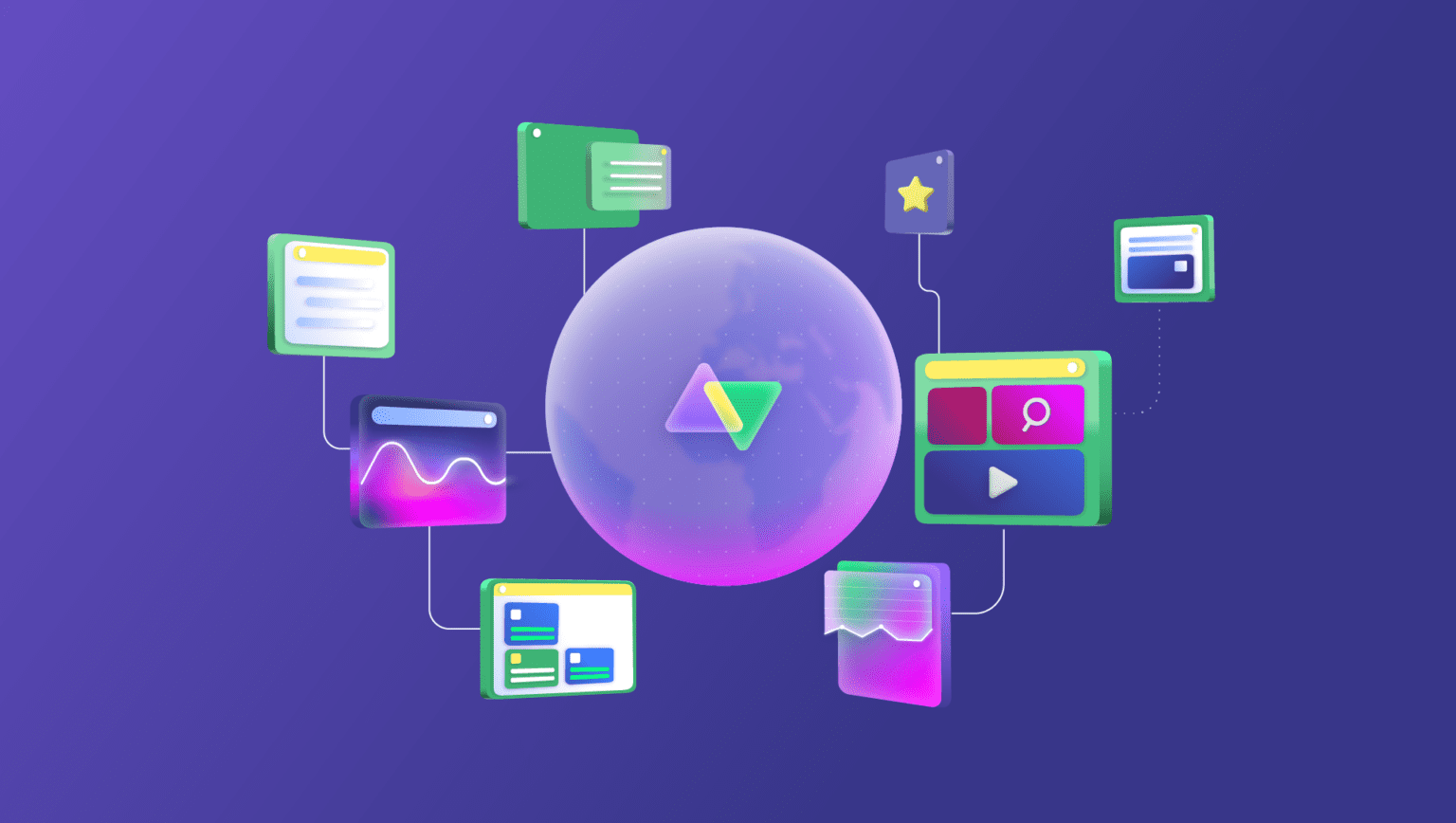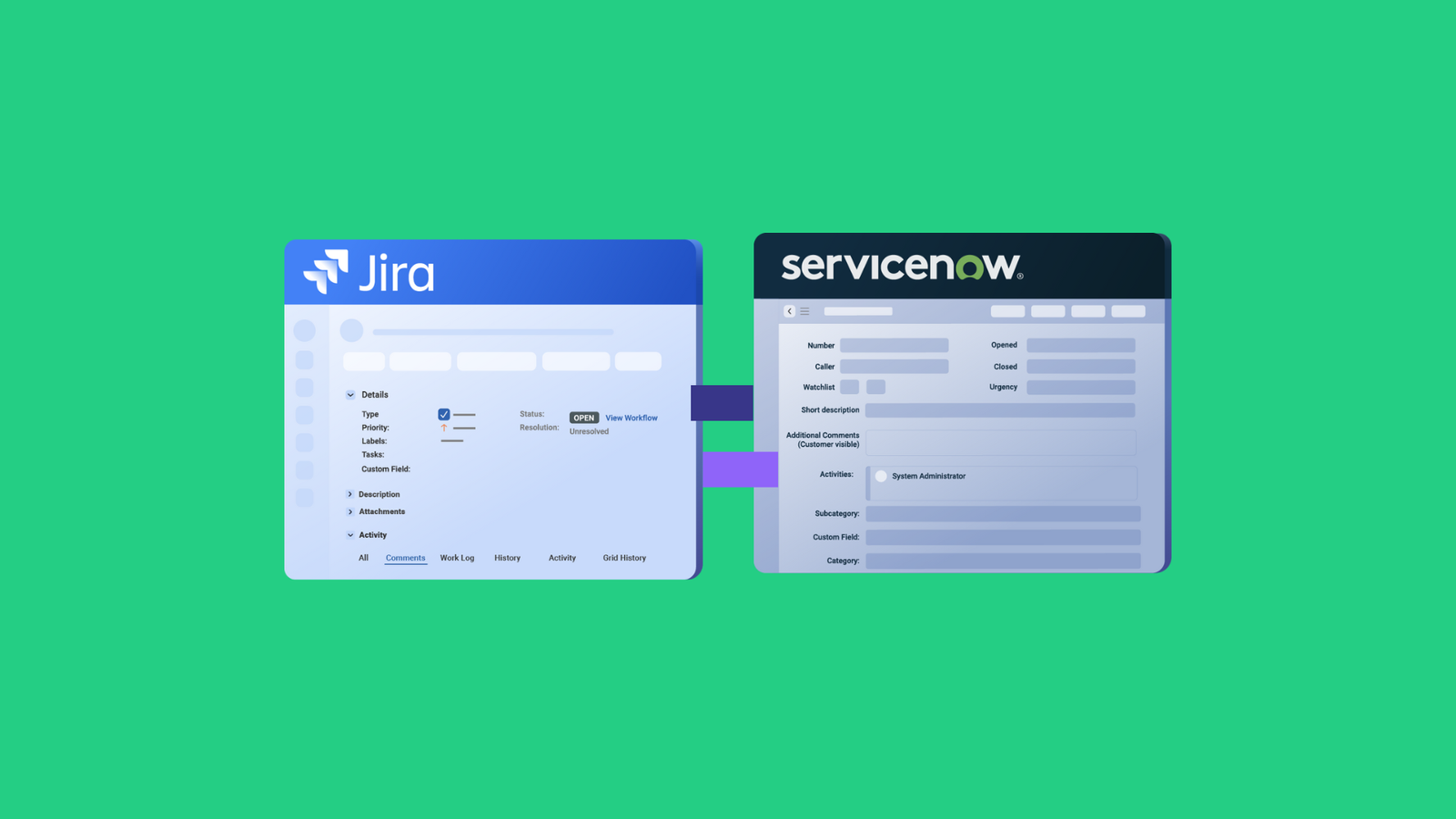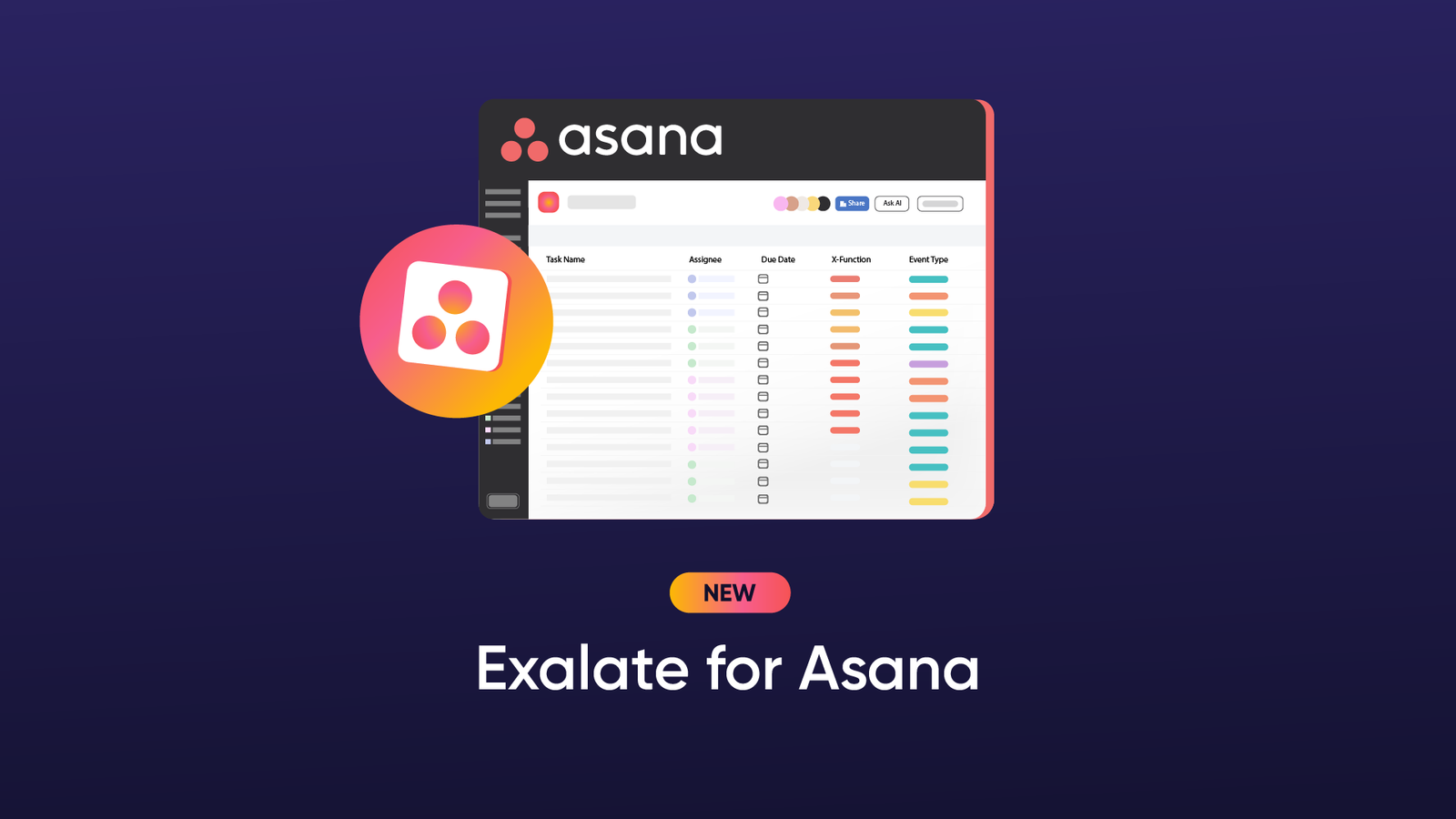Cross-platform integration is the answer to the ever-increasing SaaS sprawl in modern organizations.
Whether software or hardware, you need to find a way to connect non-compatible systems and make sure they interact smoothly.
When integrating two platforms with entirely different architectures, a lot of transformations and conversions have to take place under the hood.
Depending on the complexity, integrating such systems could be a breeze or pose a massive hurdle.
This article discusses the benefits of cross-platform systems integration as well as some use cases and examples.
What is Cross-Platform Integration?
Cross-platform integration is the process of connecting two or more systems that are not compatible with each other in order to get them to interact.
Think of the classic case of getting PlayStation consoles to interact with Xbox consoles and PCs. It’s not magic; it’s cross-platform integration.
For organizations, cross-platform systems integration usually features a middleware solution that bridges the interoperability gap.
This middleware could be a third-party solution, a custom script, or an embedded application that enables time-regulated data sharing or polling.
The integration could be between a help desk application and a CRM application to improve the quality of service delivered. The applications are limitless.
What are the Applications of Cross-Platform Integration?
Companies in different industries can integrate platforms to collect, extract, transform, clean, and analyze data. There are other applications of cross-platform integration.
E-Commerce
Vendors and shop owners can regulate sales by connecting their inventory to update the values and quantities reflected in their online stores.
Connecting CRM tools like Salesforce with ERPs or e-commerce platforms will make it possible for online sellers to collect vital user behavior and sales information.
Further applications of cross-platform marketing integration in e-commerce and retail can be seen in invoice management and quote generation.
Supply Chain
Logistics companies implement cross-platform shipping integration by connecting time-tracking software with the central dashboard to manage their fleets and monitor driver activity.
Logistics giant Maersk used cross-platform service desk integration between Jira and ServiceNow to keep their support and development teams updated in real time. This helped them reduce expenses by avoiding additional licensing costs for onboarding ServiceNow.
Healthcare
Doctors and nurses within the same hospital ecosystem can gain access to patient records for more accurate diagnosis, treatment, and prescriptions.
Using the best EMR for small practices, hospitals and healthcare institutions can integrate prescription data with customer support portals to understand how people are reacting to a new drug.
Banking and Finance
Banks can integrate payment systems with e-commerce platforms using a secure payment gateway. Once the end user passes authorization, the transaction is initiated automatically.
Insurance company Turkiye Sigorta used cross-platform synchronization software to iron out disruptions within its ticketing system. This gave them a better view of suppliers’ demands and customer response.
Manufacturing and Construction
The success of a construction or manufacturing project hinges on close collaboration between different teams. And this is only possible if the platforms they use are in sync.
For instance, the inspection team can forward their findings to the quality control and supervisory teams without physically meeting them.
Following this example, Nevaris Build was able to get its internal teams to work in tandem. This helped them reduce conversion times and decentralize the control of the integration.
Service Delivery
ServiceNow and Zendesk are platforms for connecting the help desk with the development or IT team.
With cross-platform service desk integration, users on both sides can stay up to date about the customer. The help desk will have updates about incident resolution, while the development team can scale up their efforts depending on consumer response or overall business impact.
When Qualco used this integration framework, they were able to cut down resolution times and increase the overall customer satisfaction score.
What are Examples of Cross-Platform Integration?
Here are some technical use cases for cross-platform integration:
- Connect multiple help desk applications to speed up and automate triage and incident escalation/resolution. Admins can connect the internal Jira Service Management instance with an external supplier’s ServiceDesk application.
- Shuffle data between multiple platforms by allowing them to share entities and objects between their disparate systems, including attachments, comments, formatting, and summaries.
- Obtain additional context by syncing data from custom fields. Any information that cannot be conveyed through standard fields can still reach the other side through custom field mapping. For instance, you can update Salesforce account information from a Jira custom field.
- Connect multiple instances to a single platform or get a single application to connect and interact independently with multiple systems simultaneously. For example, you can connect multiple Zendesk tickets to a single Jira Service Management issue to provide visibility for all stakeholders.
- Bridge the feature gap between two systems by extending functionality that doesn’t exist on one. One instance of this is the establishment of hierarchy and parent-child relationships. This functionality is available by default in Jira but not in Azure DevOps.
- Get instant updates about security incidents, including the entire context and impact of the breach. Cybersecurity service providers can use this integration model to connect with clients.
Read technical use cases and practical applications of Exalate for cross-platform integration
Cross-Platform vs. Cross-Company Integration
Cross-company integration is the process of establishing a collaborative ecosystem between two companies or organizations.
By contrast, cross-platform integration involves connecting two systems (applications, hardware, cloud services, etc.) with disparate architecture to get them to interact.
The commonality between both concepts is that they involve an intricate configuration of aspects of two entities that normally would be incompatible.
However, cross-platform integration is a component of cross-company integration.
Why? Because when trying to get two organizations to collaborate, you must connect whatever platforms they’re using to interface with each other.
Let’s say you want to outsource all customer support efforts to an MSP. A perfect connection is only attainable through weeks of planning and configuration to get your company’s Jira in sync with the MSP’s Zendesk.
So, cross-company integration starts with cross-platform integration.
What are the Challenges of Cross-Platform Integration?
If you have to connect systems with completely different time/date formats, APIs, system configurations, transformation logic, and native programming languages, then you’ll definitely be running into a litany of problems.
Let’s address a few of these cross-platform integration challenges:
- Figuring out the tech: As mentioned earlier, the main headache of cross-platform integration is figuring out how the system works. Now imagine if you have to do the same thing for two or more systems with starkly different infrastructure. The technical debt will only continue to pile up.
- Finding a compatible solution: If you can figure out the underlying infrastructure of both systems, the next challenge is to find a solution that is compatible with them. This means getting a solution that can handle the transformations and conversions accurately and in real time.
- Mapping the correct entities and fields: Once the tech is figured out, the next obstacle is to figure out how to map the objects and fields with a cross-platform synchronization solution. This requires a deep understanding of both systems’ APIs.
- Keeping your data secure: Another significant hurdle is security. When data moves between platforms, it becomes vulnerable to unauthorized access. Therefore, you must worry about keeping the data secure in transit and at rest.
- Maintaining consistent quality performance: The cross-platform help desk integration tool needs to deliver consistent performance and data transformation. This includes handling downtimes and errors without significant service disruption.
- Locking in with a specific vendor: When choosing a solution for cross-platform sync, pay attention to not locking in with one vendor, as decoupling later will be a massive pain.
What are the Benefits of Cross-Platform Integration?
Challenges aside, implementing cross-platform integration is a no-brainer for modern companies because of the multitude of advantages they provide.
I’ll go through them in detail.
Increase Productivity
Cross-platform integration increases the efficiency of processes and workflows by making data available as quickly as possible to all parties involved in the sync.
Since every member of the collaboration has access to data, this improves their ability to address the issue faster.
Enhance Data Consistency and Accuracy
With the cross-platform API integration doing the heavy lifting under the hood, the accuracy of the data transformation and exchange is all but guaranteed.
Compare that to when a human has to exchange the data manually, and you’ll see that the risk of duplication, errors, and inconsistencies is massively reduced.
Maintain Flexibility
Integrations across platforms make it possible for collaborative environments to maintain their flexibility.
For starters, modern cross-platform integration tools come with automation, which allows admins to explore different configuration scenarios and use cases.
Take AI-powered integration scripting, for example.
You can customize your mappings based on user prompts. This gives you the flexibility to play around with custom configurations and scripts without going through the grind of writing code and debugging.

Save Money
It’s a no-brainer that integrating more platforms is more financially favorable than having to pay for them individually.
Let’s say your team uses Jira Service Management, but your potential partners are contractually allowed to use only ServiceNow.
What we now have is a classic administrative impasse. So, the only way out is to keep both teams on their preferred platform while getting them to share data.
The upside? Your team would no longer have to pay for ServiceNow licensing to keep the collaboration alive.
Scale at will
Cross-platform brand integration makes it possible for both sides to scale at will, thanks to the flexibility it provides.
Let’s say an e-commerce company wants to expand into a new market segment. They can sync their platform with an external customer service team without worrying about their capacity to accommodate the expected surge in support tickets and user complaints.
Make Informed Decisions
Access to multiple data sources can only help your organization make critical business and administrative decisions.
For instance, a surge in support tickets after a product release could indicate a defective feature or widespread customer dissatisfaction.
If the decision-makers have access to the data, they can decide to roll back some of the changes or invest in addressing user concerns in future iterations.
Collaborate Better
Generally, collaborations can only become more fruitful when all involved parties can get what they want from the cooperation.
Cross-platform integration, whether internal or external, allows both parties access to essential data needed to optimize workflows and fine-tune processes.
Also, it increases the transparency of collaborations by making the data available to both teams and organizations.
Stay Compliant
Certain industries have specific provisions regarding the platforms that can be used for handling customer or business data.
In such cases, onboarding a non-sanctioned application or system might get you in serious trouble.
The alternative? Use cross-platform integration to obtain only the necessary information while keeping the rest private.
Improve Customer Experience
The goal of cross-platform integration is customer satisfaction. You want to automate every data exchange to improve the accuracy and delivery speed.
For the customer, this means faster resolution times for complaints, change requests, and critical incidents.

What are Cross-Platform Integration Solutions?
Cross-platform integration solutions are tools that facilitate the simultaneous connection of two or more platforms, thereby bridging the compatibility and interoperability gap.
Let’s start with some third-party integration solutions.
Exalate
Exalate is an AI-powered cross-platform integration solution that allows users to map and exchange data between disparate systems, such as Salesforce, Zendesk, Jira, ServiceNow, Azure DevOps, GitHub, and many more.
Exalate helps with scripting by providing a scripting console powered by AI Assist. Technical users can also refer to the documentation assistant Aida for quick configuration tips.
Zapier
Zapier is a cross-platform integration solution that automates workflows and processes between applications, cloud services, and more.
The main selling point for Zapier is that it supports no-code integration and has a vast library of connectors for multiple simple use cases.
Workato
Workato is a solution for the integration of data and workflow management systems. This solution provides Recipes and Actions that can be referenced for automating complex workflows between disparate systems.
Make (Integromat)
Make is a visual automation solution that connects multiple platforms to ensure they share data based on specific conditions or instructions.
You can automate workflows and processes between systems and teams using the Make drag-and-drop builder.
Custom Cross-Platform Connectors
Some companies opt for custom connectors when the available third-party tools cannot handle their cross-platform integration use case.
This could be an API connector or custom script written by the in-house development team for a specific scenario.
However, the problem with custom connectors is that they are limited in applicability. Also, the team has to maintain the system infrastructure to keep it up and running.
If your organization’s technical debt is too high, a third-party tool is the best option for cross-platform data integration.
Ready to build you own custom integration? Find out whether your budget can allow you to build or buy the solution.
What are the Keys to Successful Cross-Platform Integration?
Here are some best practices to follow in order to guarantee hitch-free cross-platform data integration:
- Agree on the fundamentals. Work closely with team admins from both sides to figure out the goal of the integration, as well as the entities, workflows, and processes that will become part of the sync.
- Get your budget right. Consult with accountants and tech leads to confirm the target budget spend. This will help you choose the correct solution within your bracket.
- Choose the right tool. The perfect solution for integrating multiple platforms has to be secure, compliant, flexible, customizable, and scalable. So, check out the features and user reviews before finalizing your choice.
- Work with automation. Triggers and automated actions speed up connections and data sync by removing the need for manual oversight.
- Decide on real-time vs. batch integration. As part of the planning process, make sure to outline whether the systems within the sync should exchange data in real time or leave the transfer to happen in batches at designated timelines.
- Run tests for every sync. Set up and try out new connections in a sandbox environment before rolling out the changes to actual systems. This will help you identify errors and potential issues before they affect the entire ecosystem.
- Train your team. Dedicate enough time and money to get your team up to speed with running and configuring the cross-platform data integration. Even if you’re using a third-party solution, your engineers should have basic knowledge of how it works.
Exalate: The Best Cross-Platform Integration Tool
Exalate works well for cross-platform integration because it provides a decentralized console so that both sides can configure their sync as they wish.
When you choose the Script mode, you can decide to make comments private on one side and share the attachments with the other side.
In terms of security, Exalate is ISO 27001:2022 certified. The solution also uses tokens and secret keys to limit access to only authorized users.
And if you are in a bind with little time to maneuver, Exalate’s AI Assist can help you script your syncs in minutes. All you need to do is provide a detailed user prompt describing your use case, and the code will appear on your console.
Want to try out Exalate’s cross-platform integration capabilities? Book a demo with our engineers right away.
Recommended Reading:



